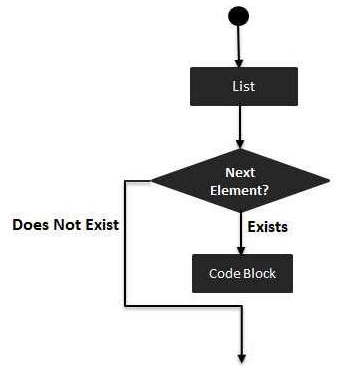
- Swift 教程
- Swift - 首頁
- Swift - 概述
- Swift - 環境
- Swift - 基本語法
- Swift - 變數
- Swift - 常量
- Swift - 字面量
- Swift - 註釋
- Swift 運算子
- Swift - 運算子
- Swift - 算術運算子
- Swift - 比較運算子
- Swift - 邏輯運算子
- Swift - 賦值運算子
- Swift - 位運算子
- Swift - 其他運算子
- Swift 高階運算子
- Swift - 運算子過載
- Swift - 算術溢位運算子
- Swift - 恆等運算子
- Swift - 範圍運算子
- Swift 資料型別
- Swift - 資料型別
- Swift - 整數
- Swift - 浮點數
- Swift - Double
- Swift - 布林值
- Swift - 字串
- Swift - 字元
- Swift - 類型別名
- Swift - 可選值
- Swift - 元組
- Swift - 斷言和前提條件
- Swift 控制流
- Swift - 決策
- Swift - if 語句
- Swift - if...else if...else 語句
- Swift - if-else 語句
- Swift - 巢狀 if 語句
- Swift - switch 語句
- Swift - 迴圈
- Swift - for in 迴圈
- Swift - while 迴圈
- Swift - repeat...while 迴圈
- Swift - continue 語句
- Swift - break 語句
- Swift -貫穿語句 (fallthrough)
- Swift 集合
- Swift - 陣列
- Swift - 集合 (Sets)
- Swift - 字典
- Swift 函式
- Swift - 函式
- Swift - 巢狀函式
- Swift - 函式過載
- Swift - 遞迴
- Swift - 高階函式
- Swift 閉包
- Swift - 閉包
- Swift - 轉義和非轉義閉包
- Swift - 自動閉包
- Swift 面向物件程式設計 (OOP)
- Swift - 列舉
- Swift - 結構體
- Swift - 類
- Swift - 屬性
- Swift - 方法
- Swift - 下標
- Swift - 繼承
- Swift - 方法重寫
- Swift - 初始化
- Swift - 析構
- Swift 高階特性
- Swift - ARC 概述
- Swift - 可選鏈
- Swift - 錯誤處理
- Swift - 併發
- Swift - 型別轉換
- Swift - 巢狀型別
- Swift - 擴充套件
- Swift - 協議
- Swift - 泛型
- Swift - 訪問控制
- Swift - 函式與方法的區別
- Swift - SwiftyJSON
- Swift - 單例類
- Swift 隨機數
- Swift 不透明型別和裝箱型別
- Swift 有用資源
- Swift - 線上編譯
- Swift - 快速指南
- Swift - 有用資源
- Swift - 討論
Swift - for-in 迴圈
Swift for-in 迴圈
for-in 迴圈迭代遍歷集合元素,例如範圍、陣列、集合、字典等。它迭代遍歷指定集合的每個元素,無需顯式索引操作。它是最常用的控制流語句,因為它以非常簡潔易讀的方式表達邏輯。
它也相容函數語言程式設計,這意味著您可以輕鬆地將高階函式(如 filter()、map()、reduce() 等)與 for-in 迴圈一起使用。
語法
以下是 for-in 迴圈的語法:
for index in var{
Statement(s)
}
流程圖
下面的流程圖將展示 for-in 迴圈的工作原理:

示例
Swift 程式演示 for-in 迴圈的使用。
import Foundation
var someInts:[Int] = [10, 20, 30]
for index in someInts {
print( "Value of index is \(index)")
}
輸出
它將產生以下輸出:
Value of index is 10 Value of index is 20 Value of index is 30
使用下劃線 "_" 的 Swift for-in 迴圈
在 for-in 迴圈中,我們還可以使用下劃線 "_" 來忽略給定集合中的值。在這裡,我們在 for-in 迴圈中用下劃線 "_" 代替 **變數名**。它將在迭代時忽略當前值。當我們只想迭代給定次數並且不需要集合中的值時,通常會使用它。
語法
以下是使用下劃線的 for-in 迴圈的語法:
for _ in var{
Statement(s)
}
示例
Swift 程式演示如何使用帶下劃線的 for-in 迴圈。
import Foundation
let numbers = [3, 5, 76, 12, 4]
// Using the underscore to ignore the values
for _ in numbers {
// Following code will execute in each iteration
print("Hello!! for-in loop!")
}
輸出
它將產生以下輸出:
Hello!! for-in loop! Hello!! for-in loop! Hello!! for-in loop! Hello!! for-in loop! Hello!! for-in loop!
Swift for-in 迴圈與範圍
我們也可以將範圍與 for-in 迴圈一起使用。範圍是在 for-in 迴圈中表示值範圍的最簡單方法,它可以是開區間、閉區間或半開區間。for-in 迴圈迭代遍歷給定範圍中的每個值,並且在每次迭代中,迴圈變數都取範圍中當前元素的值。
語法
以下是使用範圍的 for-in 迴圈的語法:
// With a closed range
for variableName in start…end{
Statement(s)
}
// With half-open range
for variableName in start..<end{
Statement(s)
}
示例
Swift 程式演示如何使用帶範圍的 for-in 迴圈。
import Foundation
// Using closed Range
print("Loop 1:")
for x in 1...6 {
print(x)
}
// Using half-open Range
print("Loop 2:")
for y in 1..<6 {
print(y)
}
輸出
它將產生以下輸出:
Loop 1: 1 2 3 4 5 6 Loop 2: 1 2 3 4 5
Swift for-in 迴圈與 stride() 函式
我們可以將 stride() 函式與 for-in 迴圈一起使用。stride() 函式以特定步長迭代遍歷一系列值。它通常用於實現更復雜的迭代模式,或建立具有自定義迭代模式的迴圈。
語法
以下是使用 **stride()** 函式的 for-in 迴圈的語法:
for variableName in stride(from: value, to: value, by: value){
statement(s)
}
引數
**stride()** 函式接受三個引數:
**from** - 包含範圍的起始值。
**to** - 包含範圍的結束值。不包含該值。
**by** - 包含值之間的步數或步長。如果其值為正,則步長向上迭代;如果其值為負,則步長向下迭代。
示例
Swift 程式演示如何使用帶 **stride()** 函式的 for-in 迴圈。
import Foundation
// The stride() function moves in upward direction
print("Loop 1:")
for x in stride(from: 1, to: 7, by: 2) {
print(x)
}
// The stride() function moves in downward direction
print("\nLoop 2:")
for y in stride(from: 7, to: 1, by: -2) {
print(y)
}
輸出
它將產生以下輸出:
Loop 1: 1 3 5 Loop 2: 7 5 3
Swift for-in 迴圈與 where 子句
Swift 還提供了一個 where 子句,我們可以將其與 for-in 迴圈一起使用。where 子句用於從給定集合中過濾出僅滿足 where 子句中指定條件的元素。它可以與所有可迭代集合(如陣列、集合和字典)一起使用。
語法
以下是帶 where 子句的 for-in 迴圈的語法:
for variableName in collectionName where condition{
Statement(s)
}
示例
Swift 程式演示如何使用帶 where 子句的 for-in 迴圈。
import Foundation
let nums = [43, 23, 66, 12, 2, 45, 33]
// Using the where clause to filter out only even elements from the array
for n in nums where n % 2 == 0 {
print("Even number is \(n)")
}
輸出
它將產生以下輸出:
Even number is 66 Even number is 12 Even number is 2